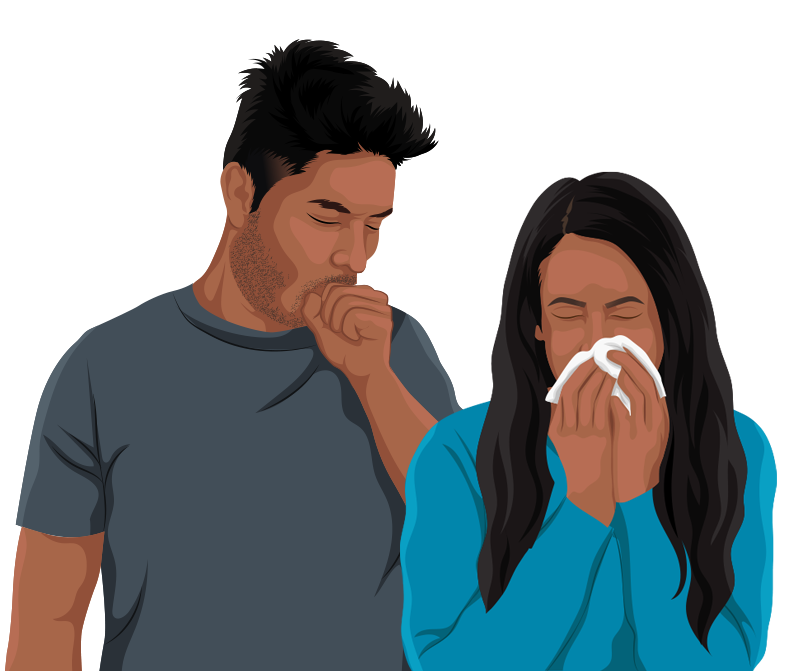What is Tuberculosis?
An infectious disease caused by a bacterium called Mycobacterium tuberculosis (Mtb), is transmitted from the patient without treatment, when he expels the droplets when coughing, speaking or sneezing, to a healthy person and who receives them by inhalation.
Symptoms
TB symptoms can vary depending on the stage of the infection, but the most common include:
- Persistent cough (often accompanied by blood or phlegm)
- Chest pain
- Fatigue
- Weight loss
- Phlegm or coughing up blood
- Night sweats
- Fever and chills
How is it detected?
It is crucial to recognize these signs and seek medical attention quickly. Any persistent cough of more than 15 days should be considered suspicious of tuberculosis. If you think you have symptoms, ask for a tuberculosis test at your nearest health care center. TB IS 100% CURABLE.
What is Latent TB?
This is the name given to the condition of the person infected by Tuberculosis, demonstrated by specific tests, but who does not present signs and symptoms, or radiological data compatible with the active disease.
It may be that a person with latent TB remains like this all their lives and does not require any treatment, but if it is a person with latent TB who also lives with HIV, they do require urgent preventive treatment, since the risk of activating it and dying from this cause is high.
Preventive measures
- Cover your mouth when sneezing
- Do not spit outdoors, do it on a piece of paper and discard it immediately
- Ventilate spaces
- If you have a persistent cough, wear a face mask.
Facts about Tuberculosis
Tuberculosis remains a major global health concern. According to the World Health Organization (WHO), around 10 million people fell ill with TB in 2020 and approximately 1.5 million died from the disease. It is crucial to raise awareness, improve access to healthcare, and implement effective prevention and treatment strategies to combat the spread of TB around the world.
TUBERCULOSIS
IN LATIN AMERICA

- According to the most recent report from the World Health Organization (WHO), Latin America continues to be one of the regions with a high burden of tuberculosis. In 2020, it is estimated that there were around 425,000 new cases of tuberculosis in the region.
- The Latin American countries with the highest tuberculosis burden are Brazil, Mexico, Peru, Colombia and Bolivia.
- The coinfection of tuberculosis and HIV continues to be a major challenge in the region. In some countries, it is estimated that around 10-15% of tuberculosis cases are associated with HIV.
- It is estimated that approximately 10% of tuberculosis cases in Latin America present resistance to one or more anti-tuberculosis drugs.
Our goal is to empower people with knowledge, promote early detection, and encourage the adoption of preventive measures to slow the spread of this infectious disease.
10 POINTS TO
TAKE URGENT ACTION
1
Universal access to the best TB drugs, including those that shorten treatment time.
Reduce the number of undiagnosed TB patients through comprehensive point-of-care testing and contact tracing programs.
2
3
Work towards a pool of $5 billion in global funding for prevention, epidemiology, testing, treatment, training and research for the global TB response with a focus on countries with the highest burden.
Participation in planning, outreach and compliance programs at local, national and global levels.
4
5
Integration of TB services with HIV and primary care settings.
Implementation of universal TB infection control policies and procedures to protect staff and patients in healthcare settings.
6
7
TB training of all health workers in high prevalence areas and production of high quality educational materials.
Launch specialized testing programs to address late presentation of TB to reduce unnecessary deaths and infections.
8
9
Implement short-term TB prevention (prophylaxis) therapy for vulnerable populations.
Involve cured and current patients to improve adherence to treatment.